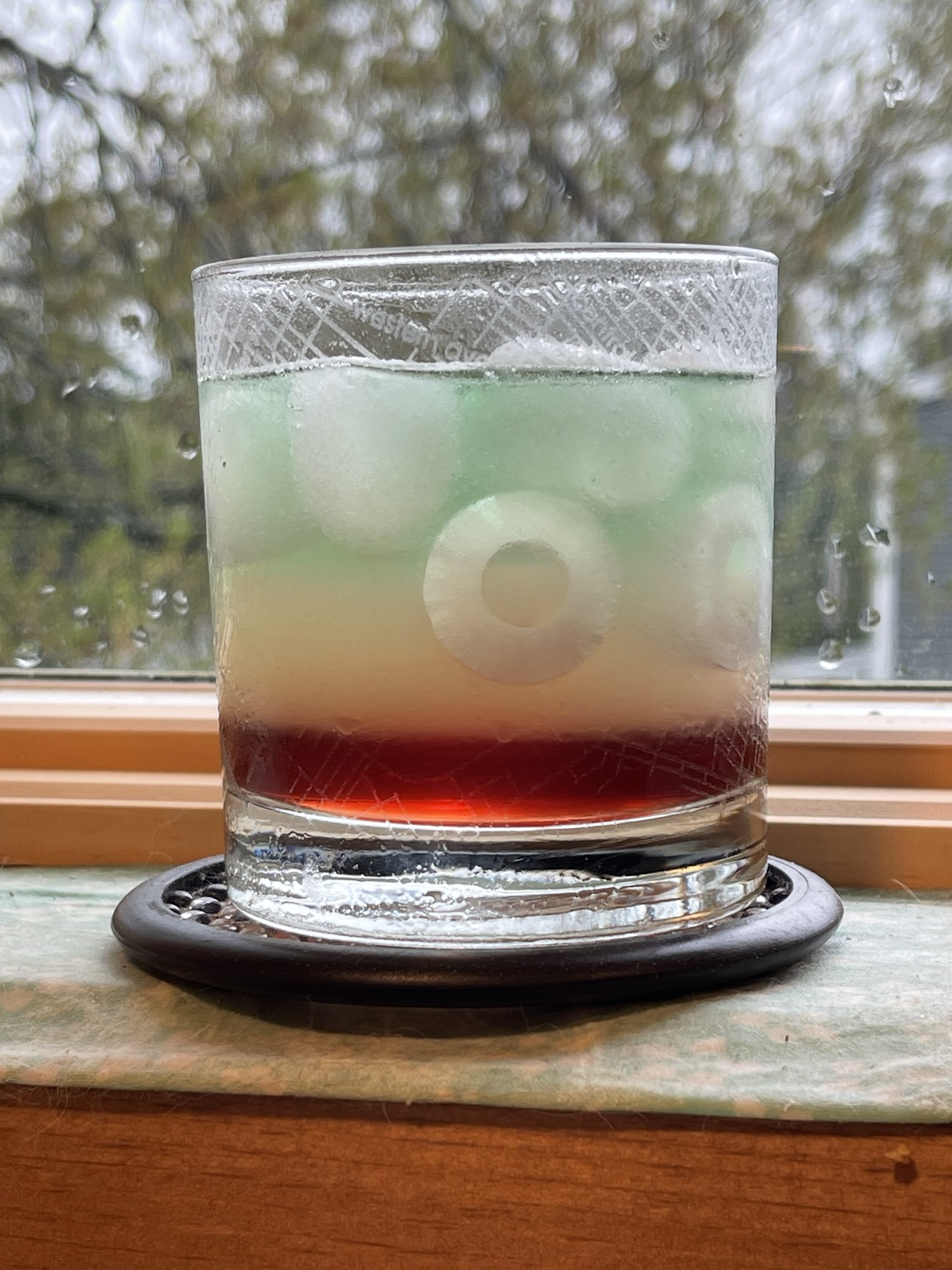I’ve been trying to think of a way to create a cocktail that would celebrate Mexico a bit more explicitly rather than just having a basic margarita. I thought it might be fun to try to build a Mexican flag into the cocktail. While the modern flag was only adopted in 1968, the tri-color green-white-red pattern has been in use since 1821, so it would have been flown by General Ignacio Zaragoza at the Battle of Puebla (I assume?). (Jump to the recipe.)
Layered cocktails and shots is a concept I haven’t played with much. I very much enjoy the New York Sour. It’s essentially a whisky sour with a layer of red wine floated on top.
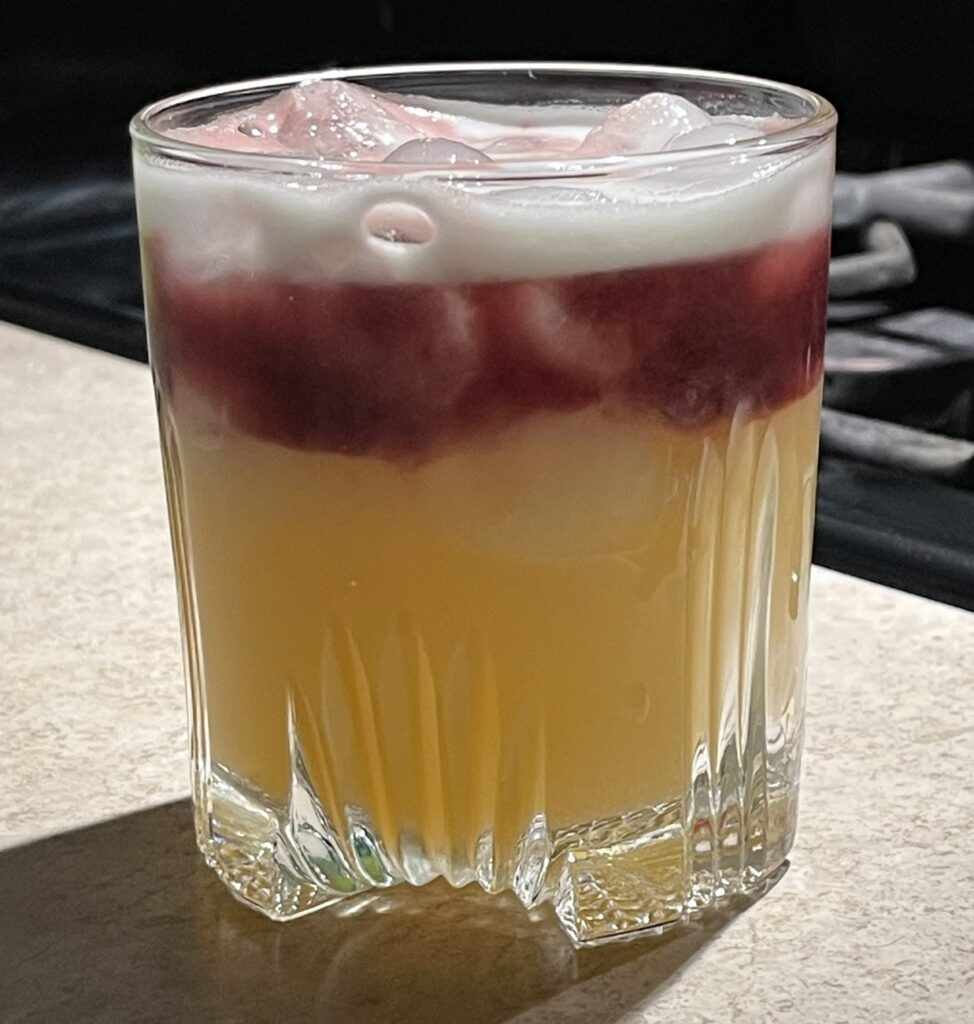
A better known example is the Tequila Sunrise, which layers orange juice and tequila over a base of grenadine (or more precisely, drops a layer of grenadine beneath the other layers). I haven’t made that one myself, though I did attempt a child-friendly version for my kids, replacing the tequila with pineapple juice. The result tasted good, but the layering left something to be desired.
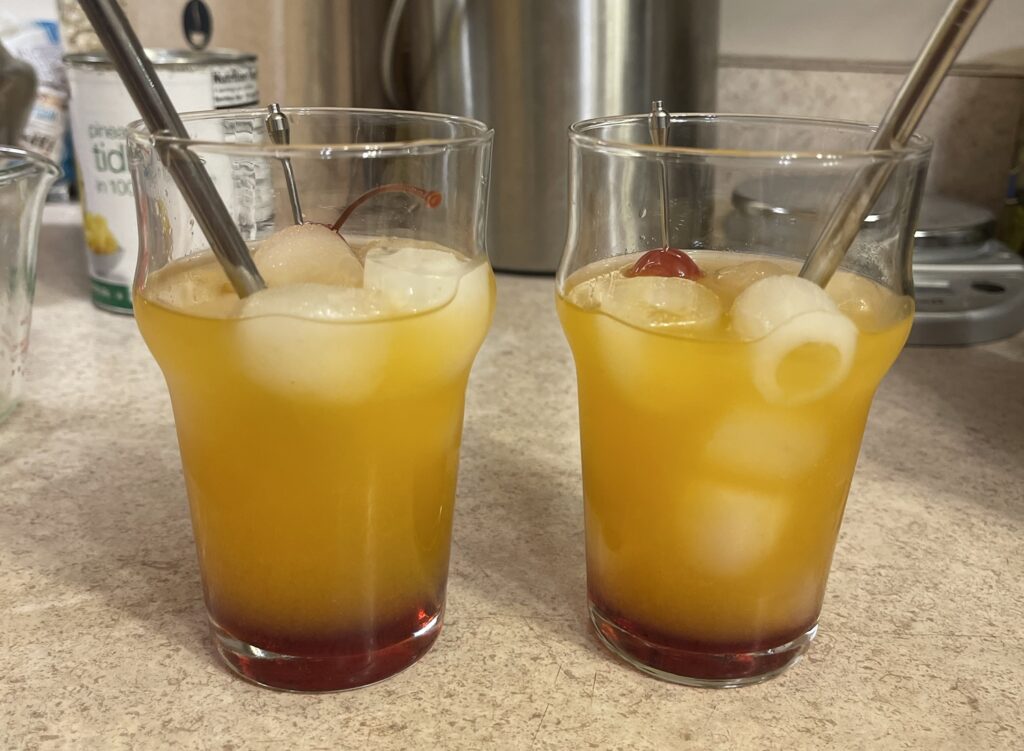
There are a whole variety of layered cocktails and shots out there. As it turns out, this is a great follow-up to my last cocktail post (about pH indicators). The chemistry concept underpinning layered cocktails is specific gravity (also known as relative density). Denser ingredients tend to sink to the bottom, and less dense ingredients can be gently poured (“floated”) on top.
However, I still wanted the outcome to be a margarita, and I wanted it to be in the colors of the Mexican flag. The problem presented itself in three axes: color, density, and taste. The red layer needed to be at the bottom, so it needed to be the most dense, the white layer next, and the green layer at the top. But all three layers needed to add up to a margarita, so I needed roughly 2 oz of tequila, between 3/4 and 1 oz of lime juice, 3/4 oz orange liqueur, and 1/2 oz of sweetener.
Grenadine is well known by bartenders to be dense: it will always sink to the bottom and makes a great base. It also works really well as the sweetener in a margarita, so that gave me a great start. However, my grenadine is homemade and is somewhat more brown than the artificially colored stuff that passes for grenadine in a store. I needed to lighten it. I actually tried limoncello, but it was too yellow. I ended up lightening it with some triple sec, but it was still more brown than I needed. Campari is the go-to bright red liqueur, but I use Contratto Bitter instead (since it’s naturally colored), which isn’t quite as bright. It ended up being sufficient though, and I had my red layer.
The green layer was more challenging. The best way to get green is to start with something yellow and add blue curaçao. But blue curaçao is incredibly overpowering from a color perspective, so some experimentation was needed. I also needed to ensure that this was the least dense layer. Generally speaking, sugar tends to add density, so less sweet ingredients would be ideal. I ended up using reposada tequila and dry curaçao, both of which are somewhat golden in color. My initial attempt at mixing (1:3:6, blue curaçao:dry curaçao: tequila) looked too much like mouthwash.
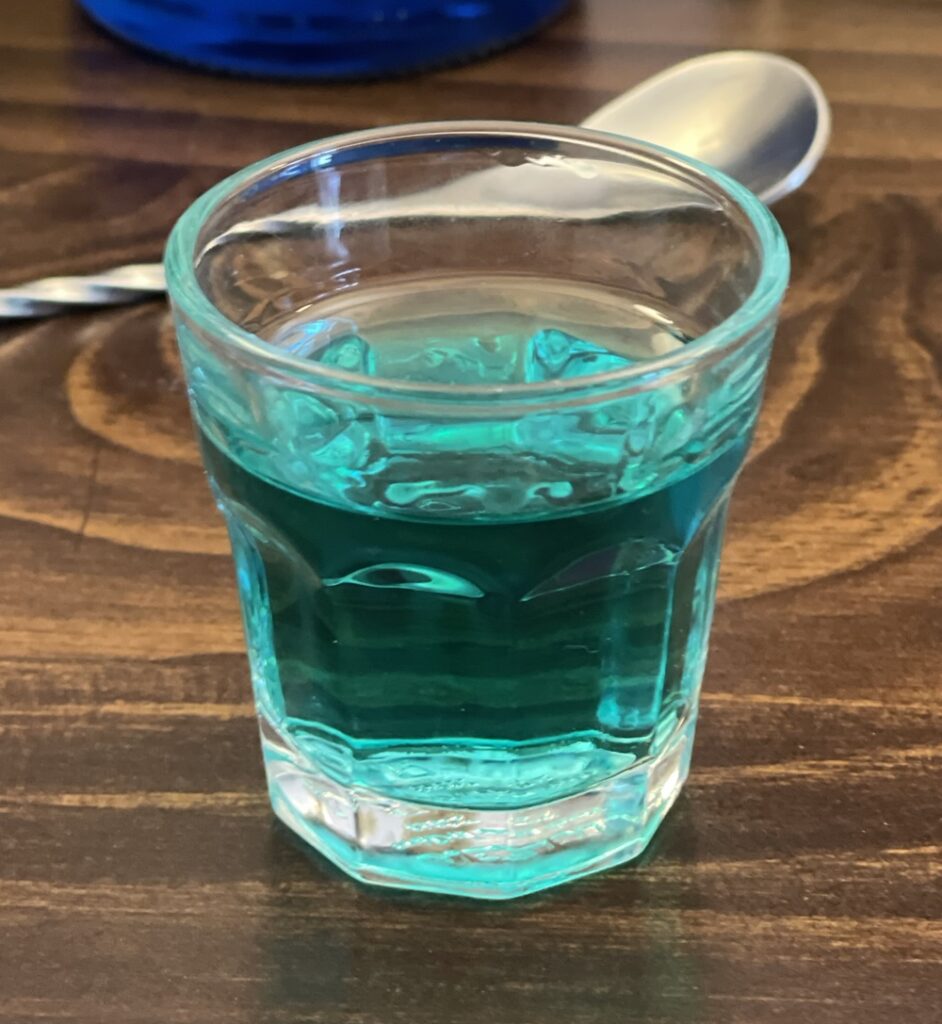
I ended up adding the blue curaçao bit by bit, using a straw in order to achieve the right color.
The result was decent enough.
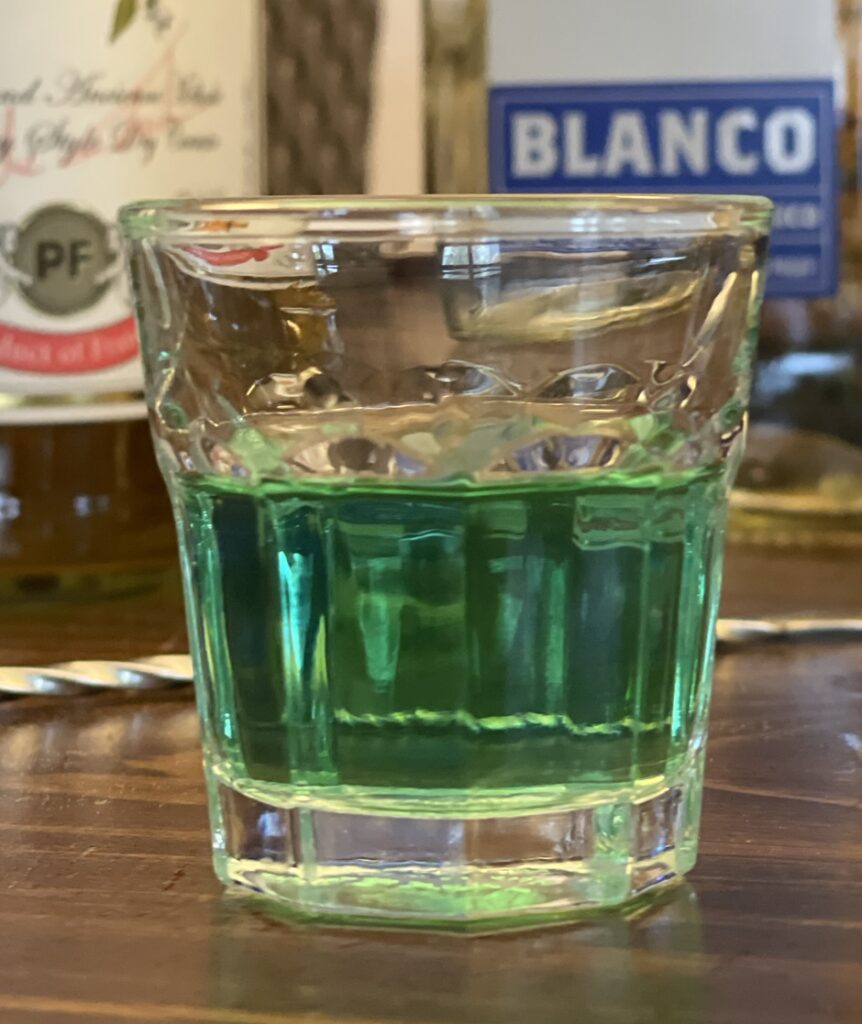
I was reasonably sure that the middle layer could be simply lime juice and blanco tequila. The next step was to try to build one, using my test mixtures. I used a tasting glass to try and mimic the proportions of the larger rocks glass I planned on using for the final product.
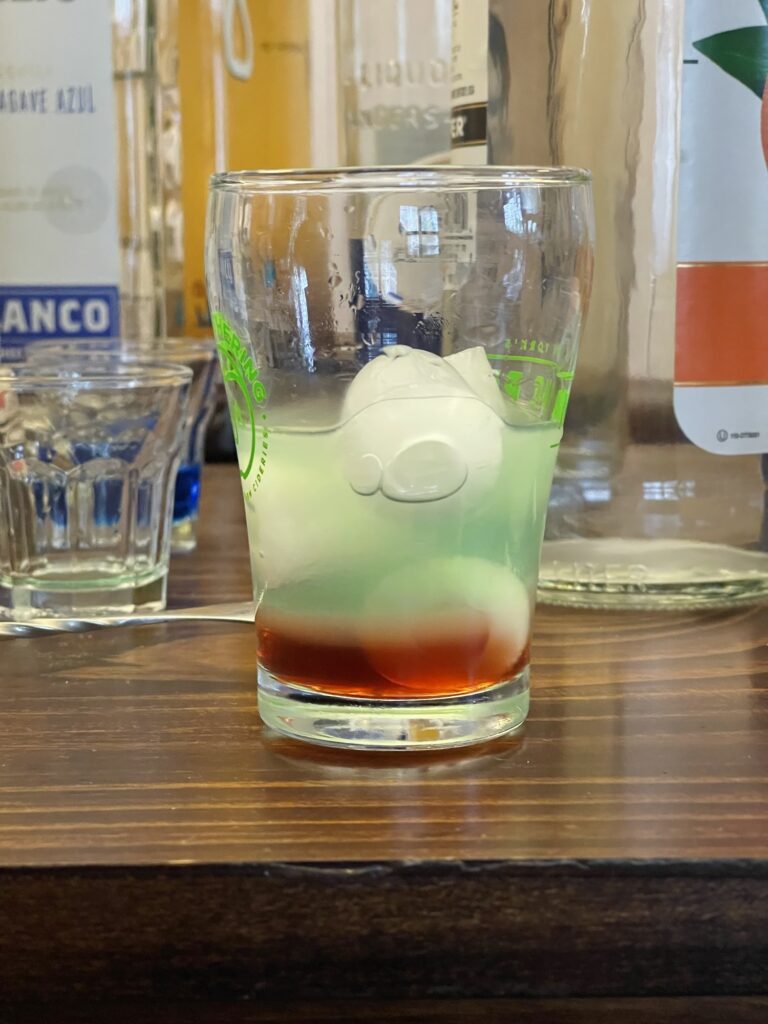
As you can see, the top layer mixed into the middle layer a bit more than was ideal. Some of that was certainly related to the shape of the glass, which meant that I couldn’t float it as gently on top as I would have liked. But the two layers were both about half tequila, and the lime juice just wasn’t sufficiently denser than the curaçao. I figured adding just a bit of simple syrup would solve the problem. Unfortunately, the only simple syrup I have on hand was made from organic sugar, which isn’t bleached, so it wasn’t quite as clear, and that colored the layer more than would have been ideal, as you’ll see. Still, I was quite happy with how it all came out, for a first attempt.
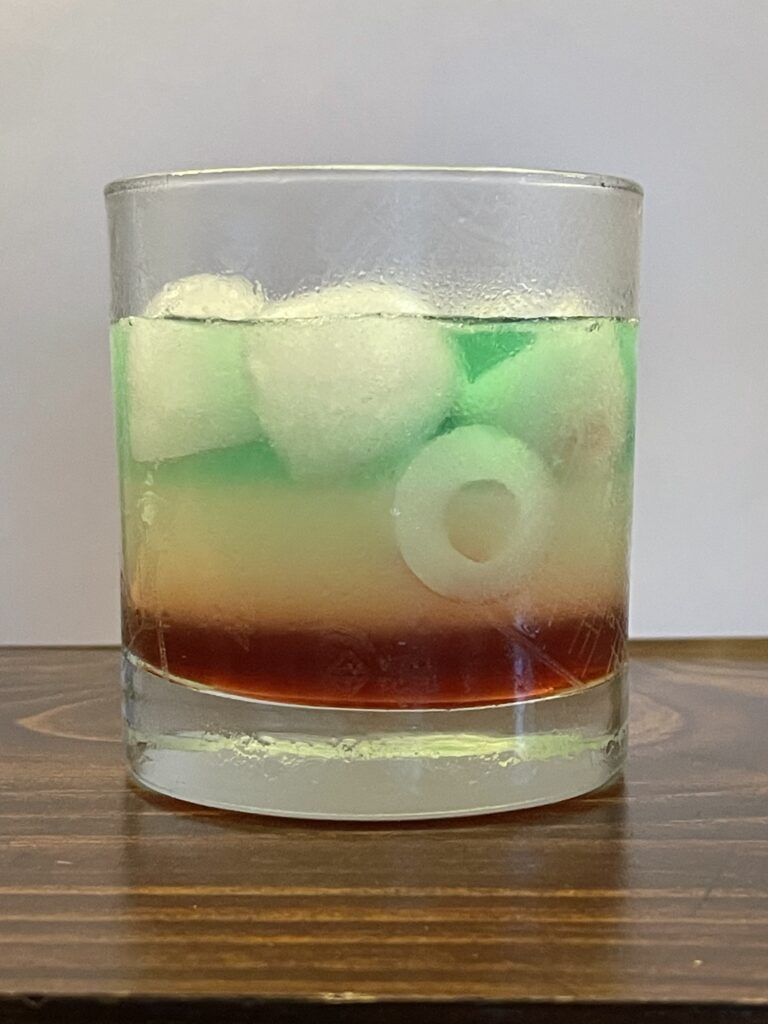
I do wonder whether some Midori might have worked for the top layer, giving a more vivid green. But it probably wouldn’t have played well with the Contratto on the bottom layer. I’ll give it some more thought. I also wonder if using a single large ice cube would have improved or marred the visual appearance of the drink.
Having dabbled with layering a bit now, I’m definitely keen to try some more. It’s a really cool concept, and it’s visually striking.
Recipe
Bottom (Red) Layer
Chill a rocks glass. Mix the bottom layer in the glass.
- 1/2- oz grenadine
- 1/2+ oz Contratto Bitter
- 1/2- oz orange triple sec
I poured a little light on the grenadine and the triple sec, and a little heavy on the Contratto, in order to give the proper coloring and balance for the rest of the drink.
Top (Green) Layer
I used a mixing glass for this layer.
- 1/2 oz dry curaçao
- 1 oz reposada tequila
- Several dashes blue curaçao
Mix the tequila and dry curaçao together. Add the blue curaçao little by little, mixing as you go, until you achieve the desired color.
Middle (White) Layer
Mix in a shaker:
- 1 oz blanco tequila
- 1 oz lime juice
Shake with ice.
Build
Add some ice cubes as desired to the glass. Then float the middle layer, and then the top layer onto the drink.

